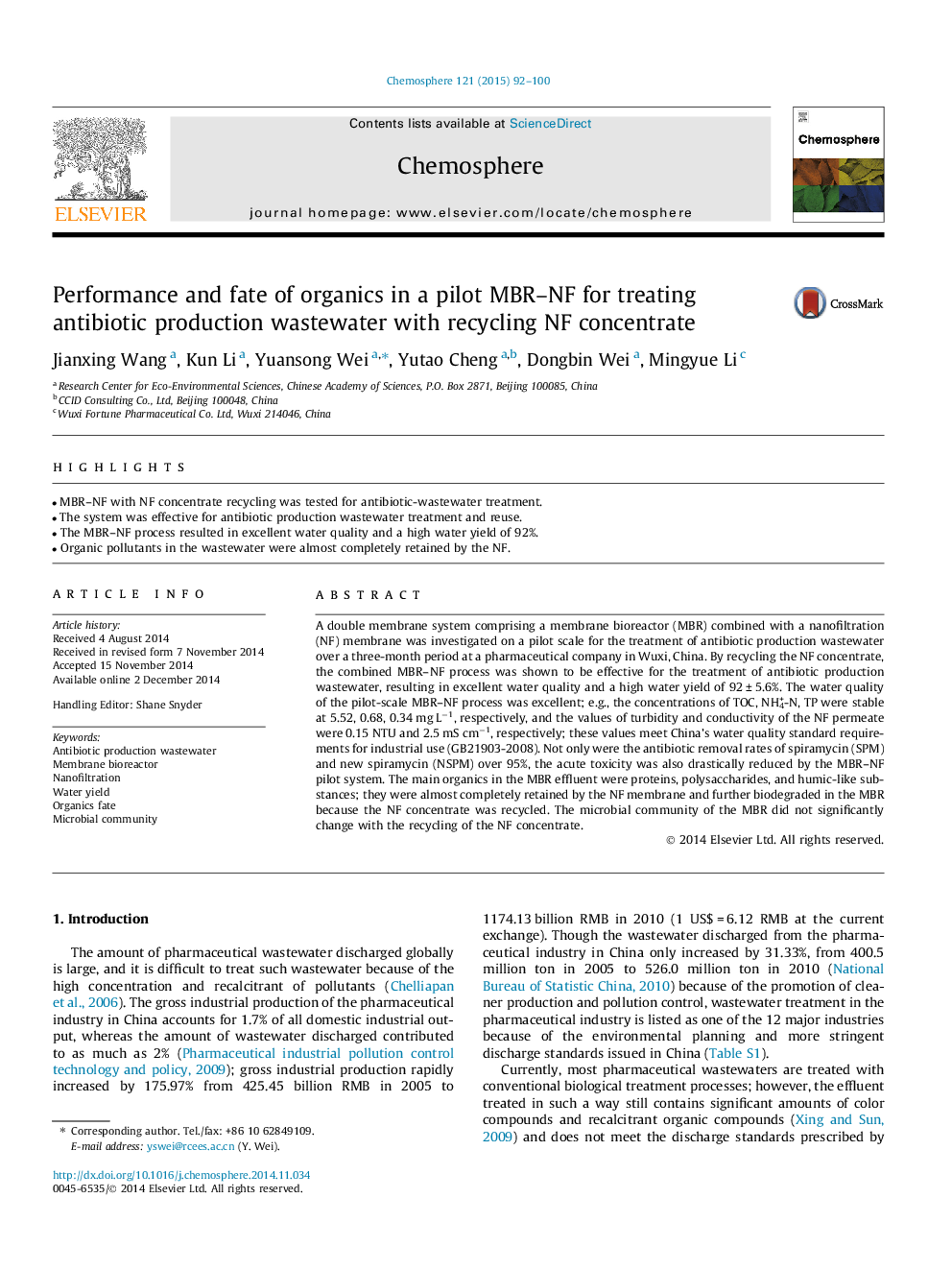| Article ID | Journal | Published Year | Pages | File Type |
|---|---|---|---|---|
| 4408567 | Chemosphere | 2015 | 9 Pages |
•MBR–NF with NF concentrate recycling was tested for antibiotic-wastewater treatment.•The system was effective for antibiotic production wastewater treatment and reuse.•The MBR–NF process resulted in excellent water quality and a high water yield of 92%.•Organic pollutants in the wastewater were almost completely retained by the NF.
A double membrane system comprising a membrane bioreactor (MBR) combined with a nanofiltration (NF) membrane was investigated on a pilot scale for the treatment of antibiotic production wastewater over a three-month period at a pharmaceutical company in Wuxi, China. By recycling the NF concentrate, the combined MBR–NF process was shown to be effective for the treatment of antibiotic production wastewater, resulting in excellent water quality and a high water yield of 92 ± 5.6%. The water quality of the pilot-scale MBR–NF process was excellent; e.g., the concentrations of TOC, NH4+-N, TP were stable at 5.52, 0.68, 0.34 mg L−1, respectively, and the values of turbidity and conductivity of the NF permeate were 0.15 NTU and 2.5 mS cm−1, respectively; these values meet China’s water quality standard requirements for industrial use (GB21903-2008). Not only were the antibiotic removal rates of spiramycin (SPM) and new spiramycin (NSPM) over 95%, the acute toxicity was also drastically reduced by the MBR–NF pilot system. The main organics in the MBR effluent were proteins, polysaccharides, and humic-like substances; they were almost completely retained by the NF membrane and further biodegraded in the MBR because the NF concentrate was recycled. The microbial community of the MBR did not significantly change with the recycling of the NF concentrate.
